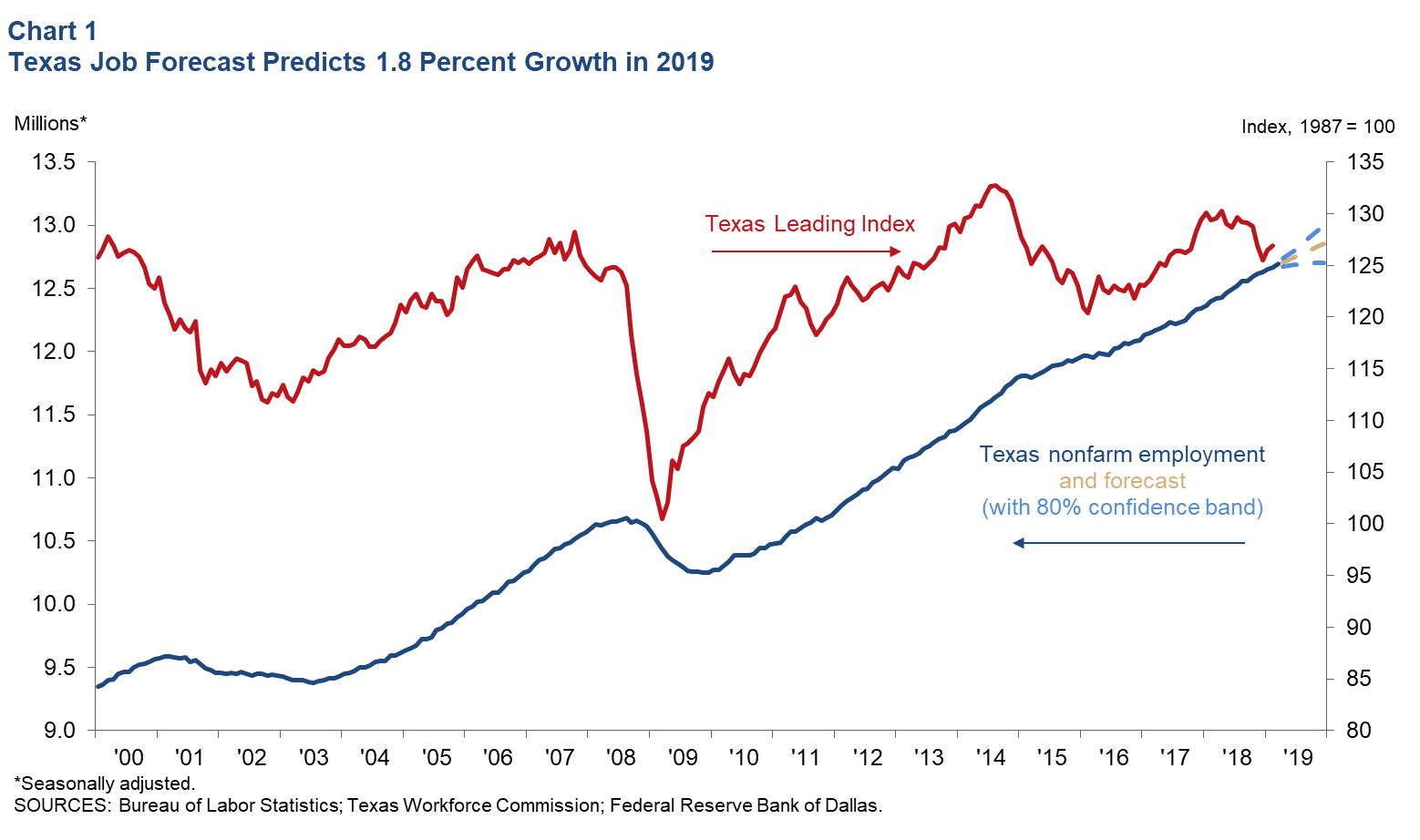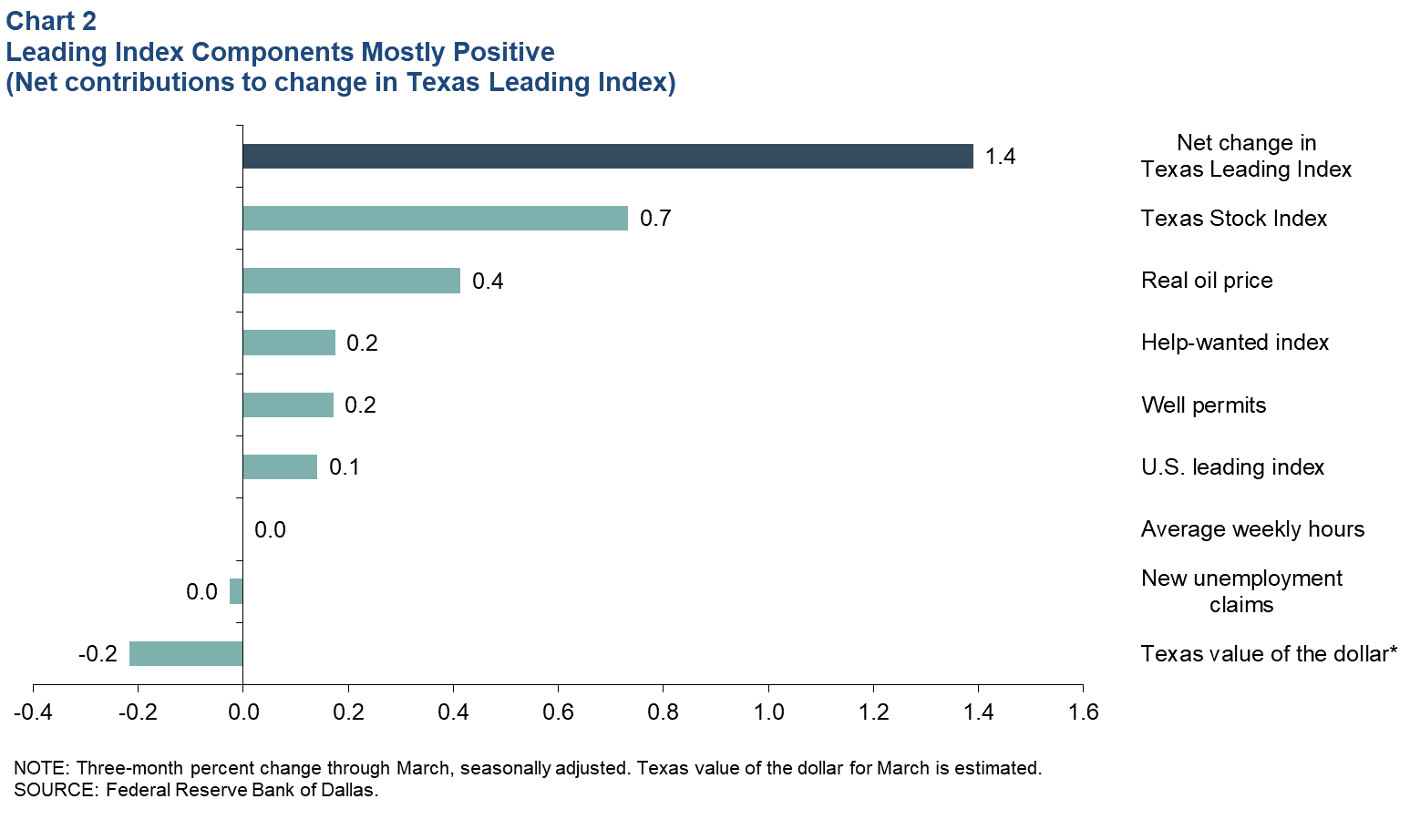Texas Employment Forecast

Incorporating March job growth of 2.2 percent and a third consecutive increase in the leading index, the Texas Employment Forecast suggests jobs will grow 1.8 percent this year (December/December), with an 80 percent confidence band of 0.6 to 3.0 percent. Based on the forecast, 226,700 jobs will be added in the state this year, and employment in December 2019 will be 12.9 million (Chart 1).
“After a sharp weakening at the end of 2018, leading indicators of the Texas economy continue to improve, reflecting improved outlooks for the national and global economies and higher oil prices” said Keith R. Phillips, Dallas Fed assistant vice president and senior economist. “Job growth in the first three months of the year generally was steady at a pace near 2.0 percent—slower than the 2.3 percent growth in 2018.
“While the forecast has improved since January, it still suggests weaker job growth this year than in 2018. The three primary factors facing the Texas economy in 2019 remain historically tight labor markets, moderately lower oil prices and continued uncertainty about trade restrictions.”
The Dallas Fed’s Texas Leading Index increased a healthy 1.4 percent over the three months ending in March (Chart 2). Growth was mostly positive across the components with the only negative signal coming from continued increases in the Texas value of the dollar. Gains in the value of the dollar make goods produced in Texas more expensive to consumers in other countries. The strongest positive signals came from gains in the stock prices of Texas companies and in oil prices. Mildly positive signals came from increases in help-wanted advertising, oil and gas well permits, and the U.S. leading index. Average weekly hours worked in manufacturing and new claims for unemployment insurance were essentially unchanged during the period.


Next release: May 17, 2019
Methodology
The Dallas Fed Texas Employment Forecast projects job growth for the calendar year and is estimated as the 12-month change in payroll employment from December to December. The forecast reported above is a point estimate with 80 percent confidence bands; in other words, the true forecast lies within the bands on Chart 1 with 80 percent probability.
The Dallas Fed Texas Employment Forecasting Model is based on a transfer function that utilizes past changes in state employment along with past changes in the Dallas Fed Texas Leading Index (TLI). Changes in the TLI have an impact on employment with a lead time of three months, and the effect dies out slowly over time. The regression coefficients on lagged changes in employment and the TLI are highly statistically significant, and the model as a whole has been accurate relative to other forecasters over the past two decades.
The forecasting model has been in use at the Dallas Fed since the early 1990s, and the employment forecast has been published in the Western Blue Chip Economic Forecast (WBCF) since 1994. Phillips and Lopez (2009) show that the model has been the most accurate in forecasting Texas job growth relative to other forecasters in the WBCF. In particular, the model had the lowest root mean squared error and has been the closest to the actual the most times (nine of the last 17 years) out of five forecasters that have consistently participated in the survey.
For more details about the model and its performance, see “An Evaluation of Real-Time Forecasting Performance Across 10 Western U.S. States,” by Keith R. Phillips and Joaquin Lopez, Journal of Economic and Social Measurement, vol. 34, no. 2–3, December 2009.
Contact Information
For more information about the Texas Employment Forecast, contact Keith Phillips at keith.r.phillips@dal.frb.org.